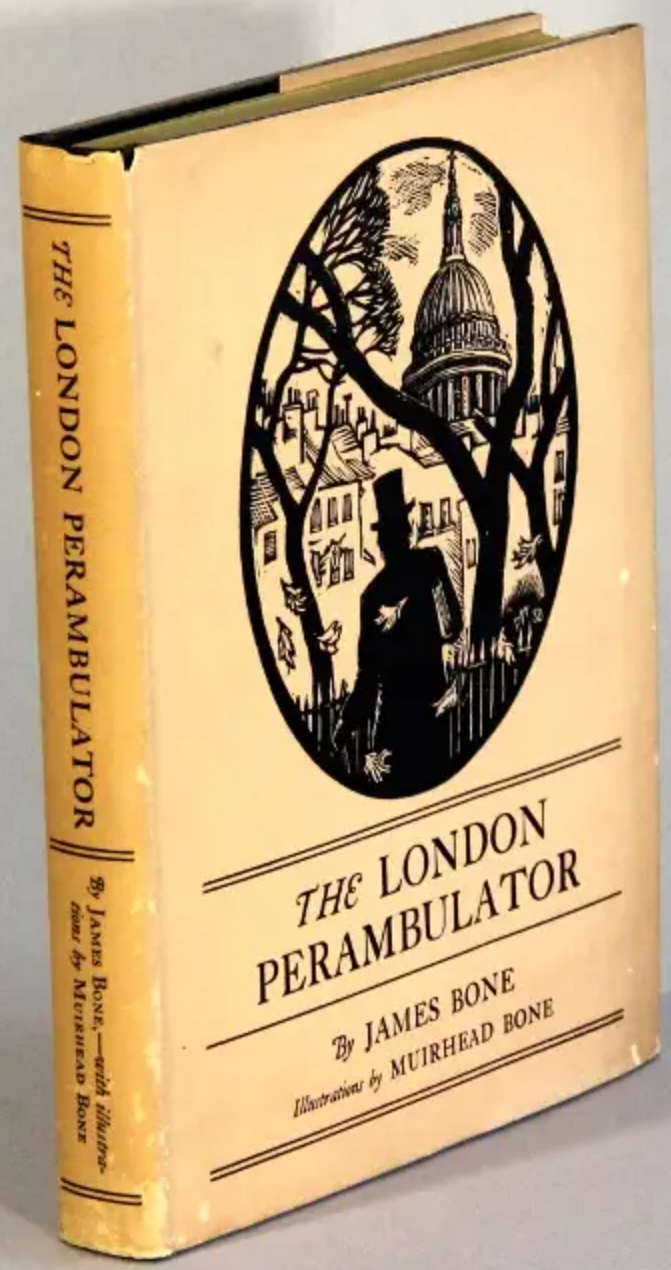James Bone, The London Perambulator (1927)
When Pattie Leckie married Robert Menzies on 27 September 1920, she knew he was a man whose career would take him places. After all, he had just won a landmark case before the High Court and his family background in politics gave some indication of even higher ambitions. Pattie knew well the time commitments involved in seeking public office, as her own father John Leckie was then a former member of the House of Representatives. She did not shy way from such burdens; indeed she would be the one who convinced her husband to make the shift to federal politics, even though this would mean many nights away from the family home in the Melbourne suburb of Kew.
Nevertheless, public life also involved a number of positive benefits, and one of them was the chance to travel herself. When in 1935 Robert was slated to travel to England to appear before the Privy Council and attend celebrations marking the Silver Jubilee of George V, Pattie took the opportunity to make her first overseas journey, even if she had mixed feelings about leaving their young children behind.
Robert kept a diary of the trip and it provides a number of insights into what Pattie enjoyed and endured. Falling into the latter category was applying calamine lotion to her husband after he broke out in a rash in the tropical heat as their ship neared the equator. At a stopover in Ceylon, Pattie was disappointed not to get to travel in a rickshaw, but considering Robert got robbed by a local taxi driver this may have been for the best. In Egypt, she got to ride a camel, with her husband noting that she was ‘the one figure of grace in a queer collection of fat dowagers with fat knees perched precariously on these ungainly steeds’.
The trip had two main highlights for Pattie. Firstly, being presented at the Royal Court. When, on this grand occasion, Queen Mary asked her ‘What is the most magnificent thing you have seen since you came to London?’, a nervous Pattie answered quite honestly ‘You your majesty’.
The second highlight was a less formal meeting with some more royals, namely the Duchess of York and her daughters Elizabeth and Margaret Rose. They gave Pattie a signed photograph, to which she felt the polite response was to give them a photo of her own family, featuring her then toothless 6 year old daughter Heather. The photographer had tried to paint the teeth back in, but the illusion had not come off, leaving Princess Margaret fascinated. Little did Pattie know at the time that an extraordinary abdication would lead to the elder sister, whom Robert noted in his diary showed a ‘perfectly comical capacity for acting’, becoming Queen Elizabeth II.
Pattie would get to know her well over the coming years. After all, this was of course just the first of what turned out to be numerous trips Pattie would take back to Britain and all around the world. In her book, A Smile for My Parents, Heather was quick to point out that Pattie’s journeys were not quite as glamorous as they were cracked up to be:
‘In the days before prime ministers had their own planes for overseas travel, there was nothing exclusive about the travel itself; all the grandeur was on and after arrival. In fact, on one flight back to Australia the trip became the very opposite of glamorous. A young couple with a baby staggered on, looking exhausted. The baby had cried for hours on an earlier leg of their journey, and it continued. Eventually my mother, with her extraordinary weakness for babies, even wet and screaming strangers, said, “Give the child to me.” The parents collapsed and went to sleep, while she walked up and down the aisle, nursing it. She calmed the poor little thing down, then sat with the sleeping, sodden bundle in her arms for two hours, cautious about moving in case he woke up.’
Pattie’s copy of The London Perambulator is a memento of a time when the novelty of travel had yet to wear off, for it was given to her by author James Bone at a lunch at King’s Bench Walk during that first trip in 1935. The book itself is something of a travel volume, but not the kind we would know today. For apart from some wonderfully extravagant and dated language, the book has no photographs, and instead relies on detailed etchings of such landmarks as Waterloo Bridge, Piccadilly Circus, the Inns of Court, the Cenotaph, St Paul’s, Newgate Prison and more.
You might also like...
Sign up to our newsletter
Sign up for our monthly newsletter to hear the latest news and receive information about upcoming events.


